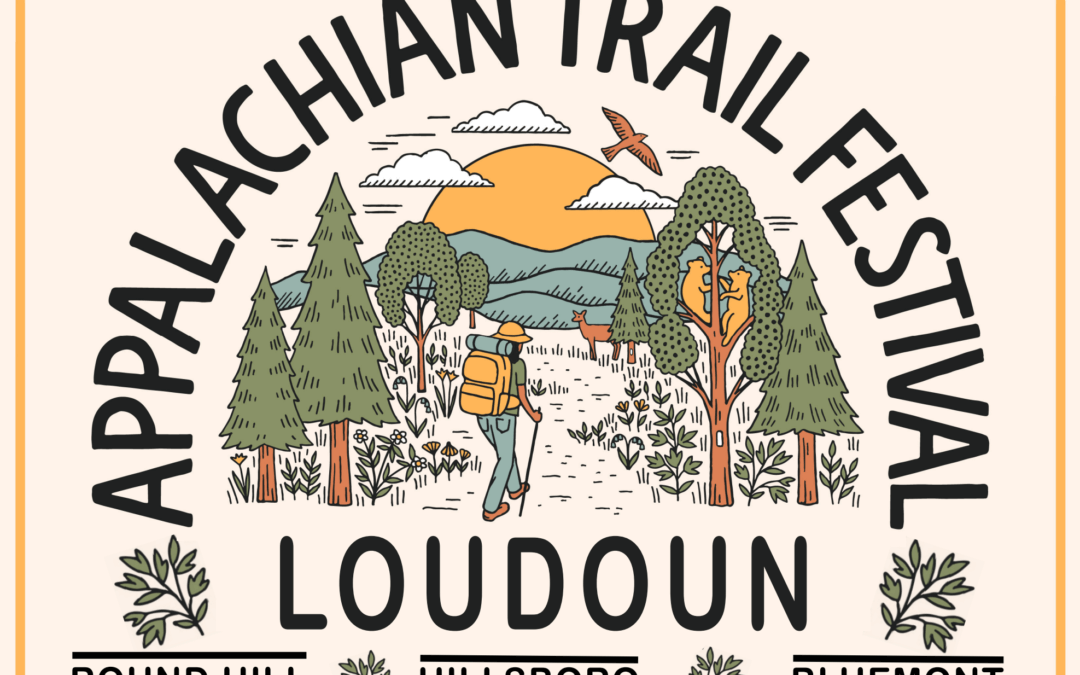
by Sean Lloyd | Mar 27, 2024 | events, featured
We’re thrilled to announce the Appalachian Trail Festival’s return. It’s back, and it’s better!
The Appalachian Trail is a 2,190-mile footpath, spanning over 14 states. We in Western Loudoun are fortunate. We have this breathtaking beauty right in our backyard.
In 2019, we celebrated a special event. It was Round Hill’s official recognition as an A.T. Community. Today, we have more exciting news. We’re bringing the festival back in 2024. But this time, we’re growing and collaborating with Hillsboro and Bluemont. Together, we’ll host the festival at The Gap Stage and Old Stone School in Hillsboro, VA.
So, clear your schedules on June 8th. Join us in celebrating the Great Outdoors and the A.T. in its entirety.
The festival this year is bigger and better. It’s packed with activities, performances, exhibitions, and enlightening talks. So, whether you’re an avid hiker, a nature lover, an outdoor enthusiast, or someone looking for a fun, community event, the festival is the place to be. Come and join us in celebrating the Appalachian Trail and the Great Outdoors!
For more information, check out the festival website.
See you there!
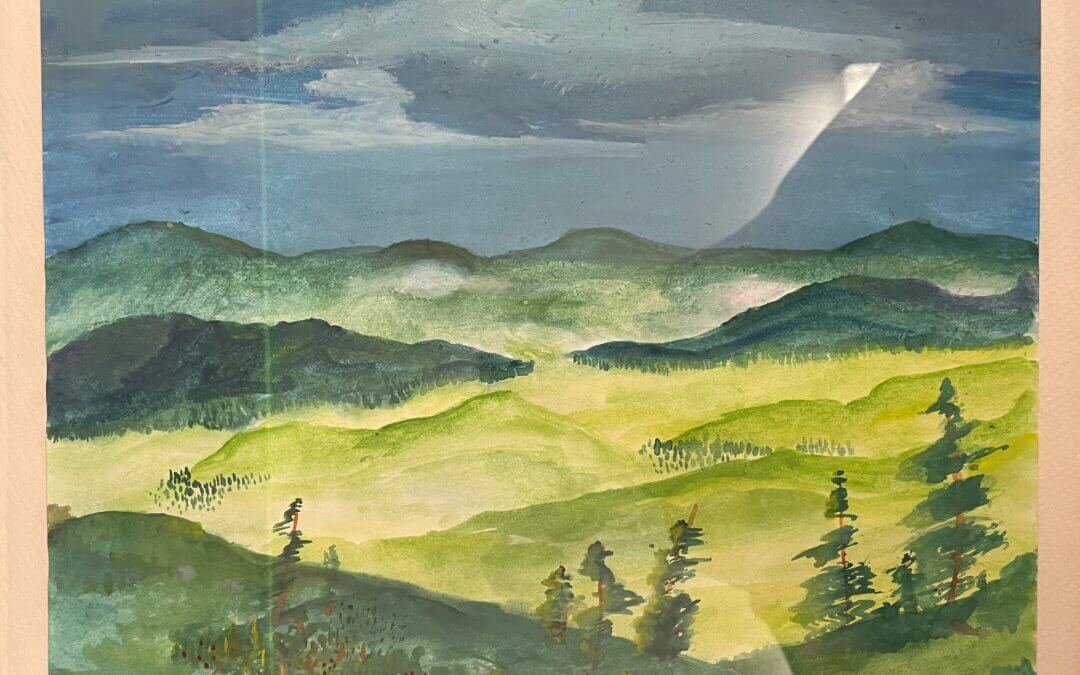
by Sean Lloyd | Jan 4, 2024 | events, featured
Are you looking for inspiration? Perhaps you’ll find it in the artists of all ages who submitted their work to the 7th Annual Round Hill Appalachian Trail Art Show.
You might be wondering, why does Round Hill have an A.T. art show in the first place? Well, since Round Hill became an official A.T. Community, we’re committed to promoting and protecting the A.T. and all the other beautiful green spaces that surround our town. One way we do this is by helping people see the beauty of nature.
And let me tell you, the wealth of talent and creativity among our local artists is truly remarkable. They’ve captured the beauty of the A.T. and the wild nature all around us in their stunning works. Every year, the show keeps getting better, and we’re proud to showcase the amazing talent in our community.
You can see this year’s art show in person at the Round Hill Arts Center from February 3rd to March 10th, or you can view entries in the online gallery on our website. And if you’re feeling inspired, why not participate in our “People’s Choice” competition? Visit the Arts Center or go online to select up to five works that you think best capture the spirit of the Appalachian Trail and the beauties of nature.
So what makes you want to “get outside”? Is it the feeling of the sun on your face, the smell of fresh pine, or the sound of a babbling brook? Whatever it may be, we hope this show will help you connect with nature and find your inspiration.
Looking for More?
Art Show Reception – Feb 4
Art Show Page
Round Hill Arts Center

by Sean Lloyd | Jan 4, 2024
We are thrilled to invite you to the Artists’ Reception of our 7th Annual Appalachian Trail Art Show. This special event celebrates the diverse talents of artists who have captured the essence of the Appalachian Trail and the natural beauty surrounding it.
Whether you’re an art enthusiast, a nature lover, or both, this is the perfect opportunity to immerse yourself in stunning artworks ranging from paintings and photography to sculpture and mixed media. Meet the artists, enjoy light refreshments, and be inspired by the creativity that the Appalachian Trail ignites.
Artwork will be on display from February 3rd to March 10th, but don’t miss this unique chance to experience the opening celebration and connect with the artistic community.
All are welcome, and admission is free.
(Alternate Date for Snow: February 11th)
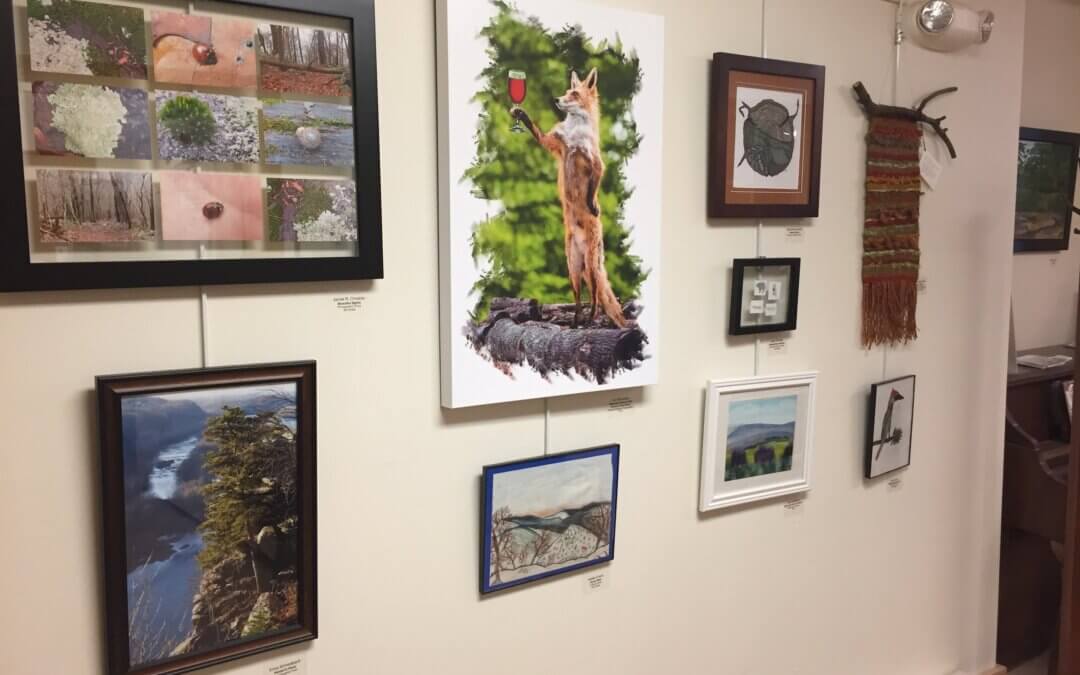
by Sean Lloyd | Jan 4, 2024
Calling All Artists
Submit artwork for our 7th Annual Appalachian Trail Art Show!
Join our Appalachian Trail Art Show celebrating the Trail and the surrounding Great Outdoors. The A.T. is a designated National Scenic Trail that stretches 2,200 miles from Maine to Georgia. It’s right in our backyard, less than 5 miles away, with local hotspots like Bear’s Den and Raven Rocks. Help us to connect our community with the A.T. by sharing your art!
Register to guarantee display of up to three pieces, and drop off the physical piece ready to hang at the Round Hill Arts Center January 27-28, 2024. Registration for adults is $5 per piece for up to 3 pieces, and students are free.
We will hold an Artists’ Reception on Sunday, February 4th, and the artwork will be available for in-person viewing from February 3rd to March 10th.
Drop off information will be emailed out approximately a week before the drop off dates.
Please sign up registering at the Round Hill Arts Center here.
KEY DATES
- 1/27-1/28, 12-4pm: Drop off art at Round Hill Arts Center
- 2/3-3/10: Art displayed at Round Hill Art Center
- 2/4: Artists’ Reception – 2-4pm (Snow day 2/11)
- 3/11-3/15: Pick Up Artwork
ALL AGES WELCOME
ANY MEDIUM
- Drawing
- Painting
- Printmaking
- Photography
- Sculpture
- Pottery
- Textile
- Mixed Media
ONLY 100% ORIGINAL INDIVIDUAL WORKS
THEME = A.T. + OUTDOORS
Artwork subjects should celebrate the Appalachian Trail and local Great Outdoors. Examples include:
- Hiking
- Appalachian Trail
- Blue Ridge Mountain Scenes
- Native Plants and Animals

by Sean Lloyd | Jan 2, 2024
We’re thrilled to announce the Appalachian Trail Festival’s return. It’s back, and it’s better!
The Appalachian Trail is a 2,190-mile footpath, spanning over 14 states. We in Western Loudoun are fortunate. We have this breathtaking beauty right in our backyard.
In 2019, we celebrated a special event. It was Round Hill’s official recognition as an A.T. Community. Today, we have more exciting news. We’re bringing the festival back in 2024. But this time, we’re growing and collaborating with Hillsboro and Bluemont. Together, we’ll host the festival at The Gap Stage and Old Stone School in Hillsboro, VA.
So, clear your schedules on June 8th. Join us in celebrating the Great Outdoors and the A.T. in its entirety.
The festival this year is bigger and better. It’s packed with activities, performances, exhibitions, and enlightening talks. So, whether you’re an avid hiker, a nature lover, an outdoor enthusiast, or someone looking for a fun, community event, the festival is the place to be. Come and join us in celebrating the Appalachian Trail and the Great Outdoors!
For more information, check out the festival website.
See you there!
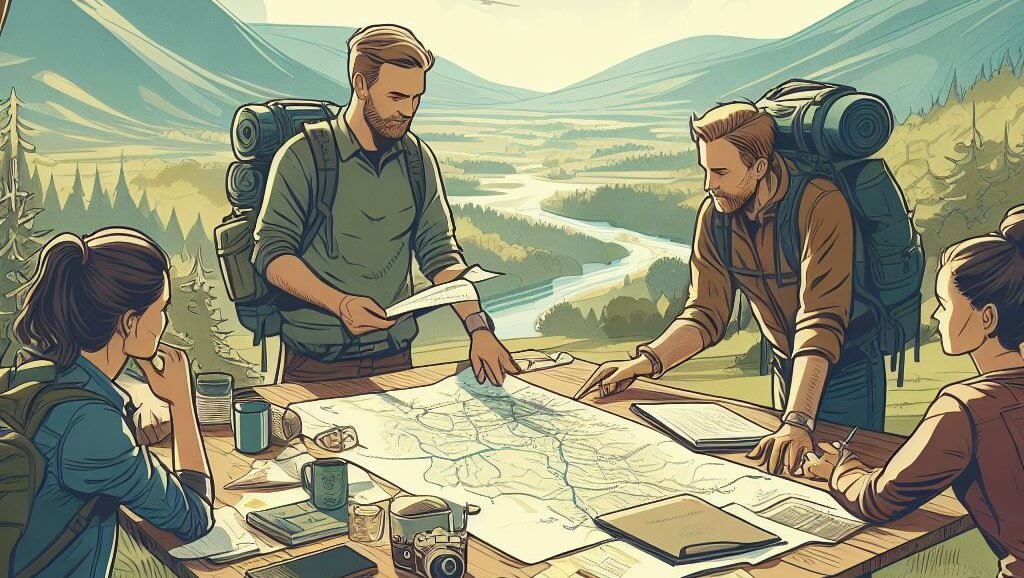
by Sean Lloyd | Oct 19, 2023
Join us for a planning meeting to start organizing the Loudoun Appalachian Trail Festival, to be held on June 8, 2024. We’ll discuss the venue, schedule of events, participant recruiting, sponsorship opportunities, and volunteer needs. Your ideas and involvement are critical to making this year’s festival even more successful than the last!
The Loudoun Appalachian Trail Festival celebrates the hiking culture and outdoor community in Loudoun County. The festival features exhibits by local outdoor clubs and businesses, guest speakers, group hikes, food trucks, live music, gear demos, a camping area, and more.
If you’re interested in helping plan this exciting community event, please attend our meeting. We need your help and enthusiasm!
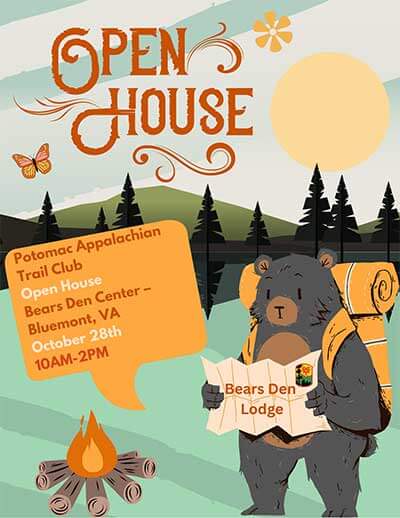
by Sean Lloyd | Oct 19, 2023
Experience the beauty of autumn in the Blue Ridge Mountains!
Join the Potomac Appalachian Trail Club for a fun-filled day at the Bears Den Lodge Open House on Saturday, October 28th from 10AM-2PM. The historic lodge, located on the Appalachian Trail west of Bluemont, Virginia, will host demonstrations, activities, live music, tasty treats, and more against the stunning backdrop of fall foliage.
Watch unique demonstrations like a grip hoist, cross-cut saw, and backpacking talk to gain skills and appreciation for outdoor recreation. Browse the outdoor gear garage sale for great deals on supplies. Pick the perfect pumpkin from the patch to take home. Get creative at the autumn craft station. Enjoy live music from local artists. Meet fellow outdoor enthusiasts from the community. And join in a group hike on the scenic Appalachian Trail.
Mark your calendars for this free event jam-packed with fall fun for all ages! The Bears Den Lodge Open House is the perfect opportunity to take in the beauty of the Blue Ridge Mountains in autumn. We look forward to seeing you there!
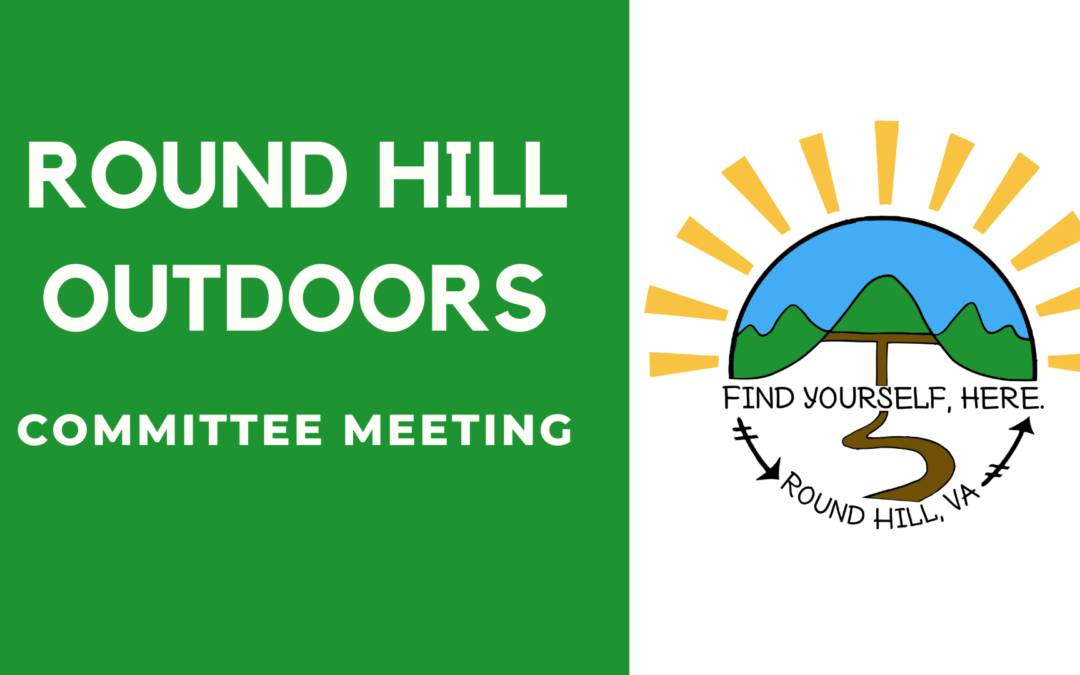
by Sean Lloyd | Oct 19, 2023
Do you love outdoor recreation, environmental stewardship, and community involvement? If so, we invite you to join us at our upcoming Round Hill Outdoors (RHO) Committee meeting!
🗓️ Mark your calendars for the 3rd Thursday of the month.
Our monthly meetings cover trail news, event planning, project discussions and more. We also offer a variety of programs such as the Tree City USA, Community Parks, Community Garden, and the Appalachian Trail Arts Festival and Art Show. Our events not only foster environmental stewardship but also stimulate sustainable economic development through tourism and outdoor recreation.
Your participation in the RHO meeting can make a significant difference in our community. You’ll have the opportunity to contribute your ideas, participate in exciting projects, and most importantly, be part of a community that values and cherishes its natural surroundings.
Our meetings are open to everyone – experienced hikers, outdoor enthusiasts, students, teachers, parents, or anyone interested in preserving and promoting the beauty of our Appalachian Trail. We believe that together, we can make our community stronger and happier, one step at a time!
Established in 2018, RHO is a group of engaged residents who were instrumental in designating Round Hill as an Appalachian Trail Community. Today, we continue to fulfill our mission – to inspire our community to engage with the great outdoors, strengthen connections with each other, and foster a healthier, happier Round Hill.
To get involved or if you have any questions, don’t hesitate to reach out to us.

by Sean Lloyd | Oct 19, 2023
Do you love outdoor recreation, environmental stewardship, and community involvement? If so, we invite you to join us at our upcoming Round Hill Outdoors (RHO) Committee meeting!
🗓️ Mark your calendars for the 3rd Thursday of the month.
Our monthly meetings cover trail news, event planning, project discussions and more. We also offer a variety of programs such as the Tree City USA, Community Parks, Community Garden, and the Appalachian Trail Arts Festival and Art Show. Our events not only foster environmental stewardship but also stimulate sustainable economic development through tourism and outdoor recreation.
Your participation in the RHO meeting can make a significant difference in our community. You’ll have the opportunity to contribute your ideas, participate in exciting projects, and most importantly, be part of a community that values and cherishes its natural surroundings.
Our meetings are open to everyone – experienced hikers, outdoor enthusiasts, students, teachers, parents, or anyone interested in preserving and promoting the beauty of our Appalachian Trail. We believe that together, we can make our community stronger and happier, one step at a time!
Established in 2018, RHO is a group of engaged residents who were instrumental in designating Round Hill as an Appalachian Trail Community. Today, we continue to fulfill our mission – to inspire our community to engage with the great outdoors, strengthen connections with each other, and foster a healthier, happier Round Hill.
To get involved or if you have any questions, don’t hesitate to reach out to us.

by Sean Lloyd | Oct 19, 2023
Do you love outdoor recreation, environmental stewardship, and community involvement? If so, we invite you to join us at our upcoming Round Hill Outdoors (RHO) Committee meeting!
🗓️ Mark your calendars for the 3rd Thursday of the month.
Our monthly meetings cover trail news, event planning, project discussions and more. We also offer a variety of programs such as the Tree City USA, Community Parks, Community Garden, and the Appalachian Trail Arts Festival and Art Show. Our events not only foster environmental stewardship but also stimulate sustainable economic development through tourism and outdoor recreation.
Your participation in the RHO meeting can make a significant difference in our community. You’ll have the opportunity to contribute your ideas, participate in exciting projects, and most importantly, be part of a community that values and cherishes its natural surroundings.
Our meetings are open to everyone – experienced hikers, outdoor enthusiasts, students, teachers, parents, or anyone interested in preserving and promoting the beauty of our Appalachian Trail. We believe that together, we can make our community stronger and happier, one step at a time!
Established in 2018, RHO is a group of engaged residents who were instrumental in designating Round Hill as an Appalachian Trail Community. Today, we continue to fulfill our mission – to inspire our community to engage with the great outdoors, strengthen connections with each other, and foster a healthier, happier Round Hill.
To get involved or if you have any questions, don’t hesitate to reach out to us.








Recent Comments